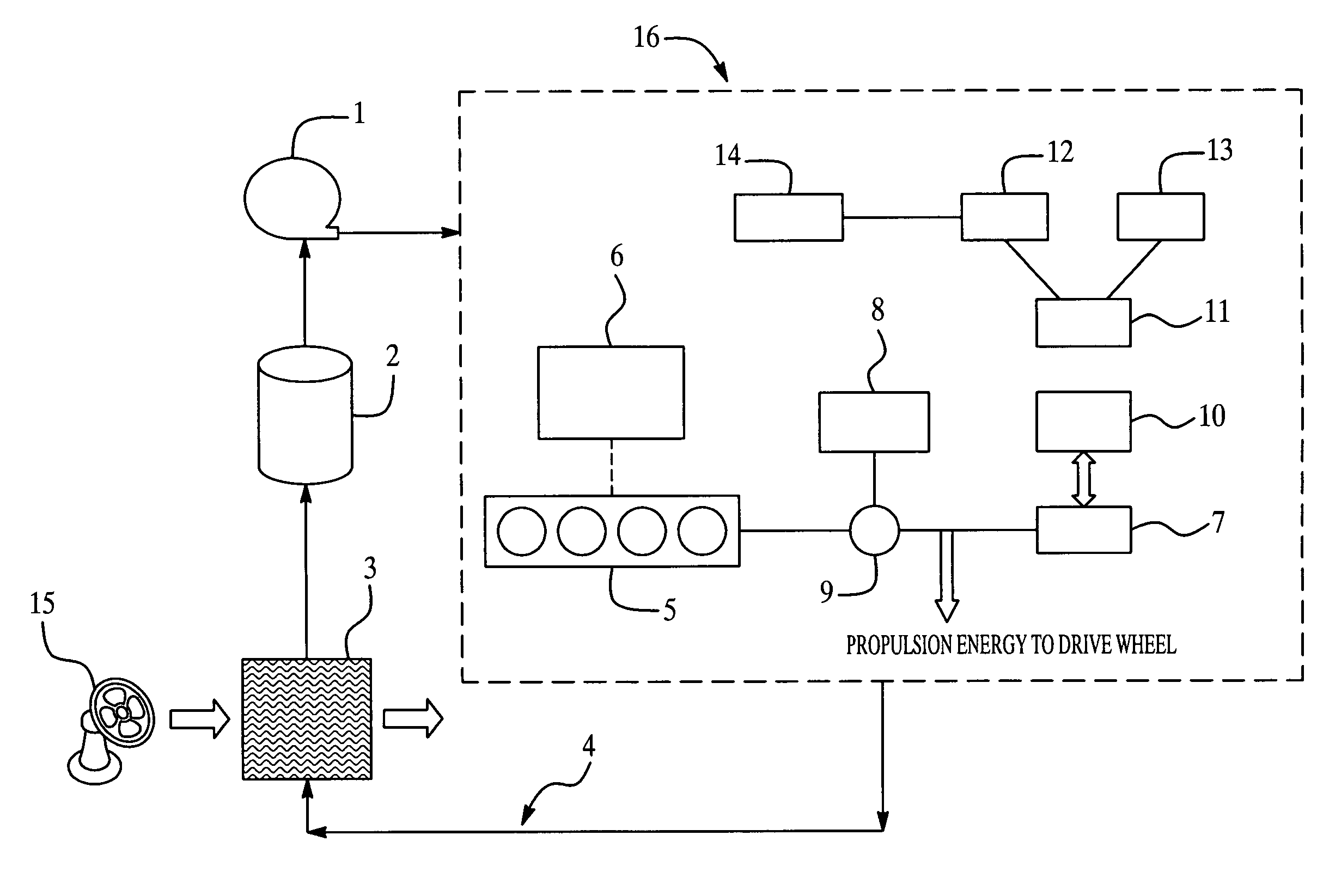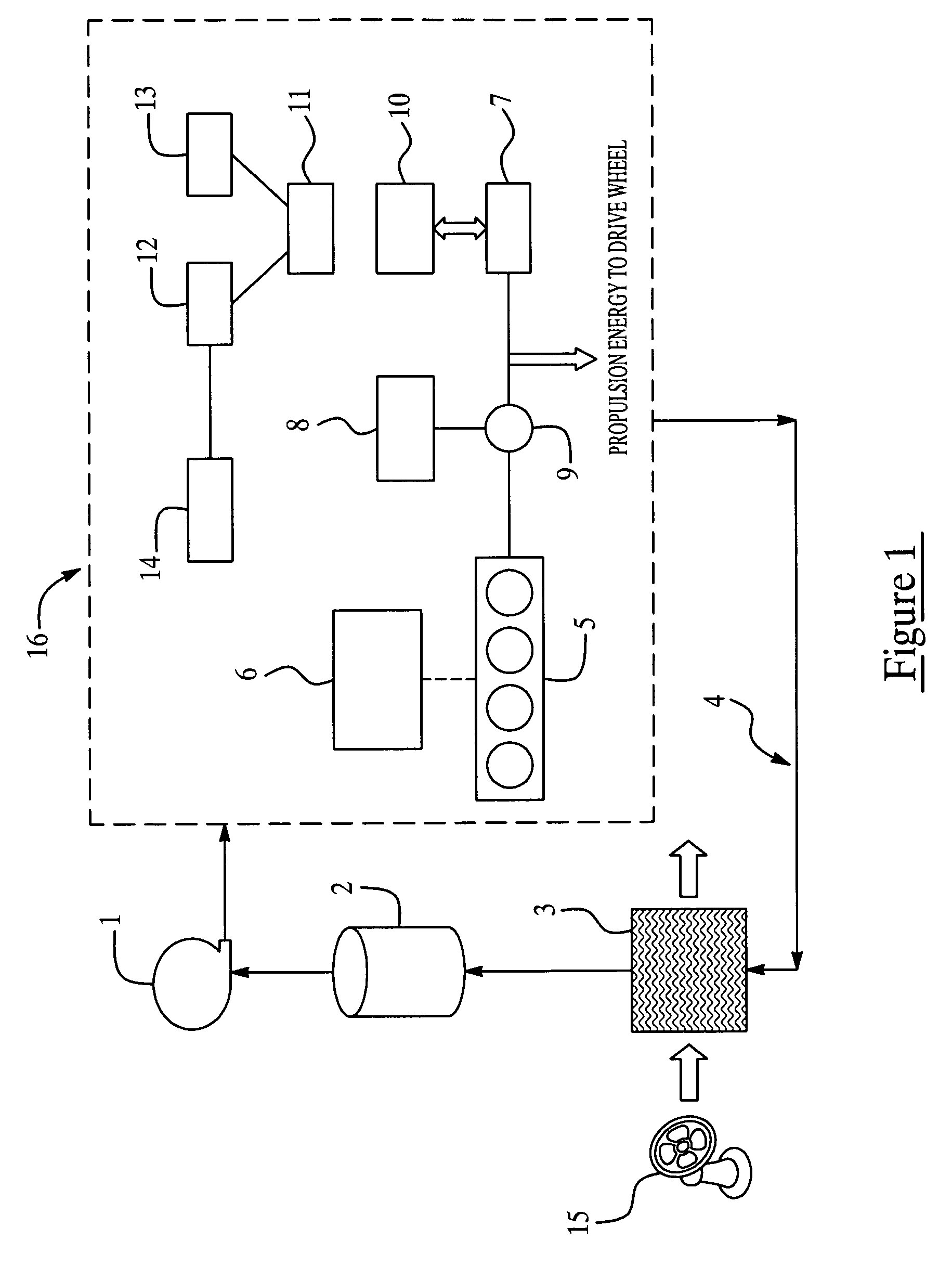Corrosion inhibitors, corrosion inhibiting heat transfer fluids, and the use thereof
a heat transfer fluid and corrosion inhibitor technology, applied in water softening, sustainable manufacturing/processing, final product manufacturing, etc., can solve the problems of increased corrosion and/or short-circuiting of electrical current, unsuitable (or not optimized) use of traditional prior art cooling systems and coolants for alternative power sources, and electrical shock
- Summary
- Abstract
- Description
- Claims
- Application Information
AI Technical Summary
Benefits of technology
Problems solved by technology
Method used
Image
Examples
example 1
[0086]The galvanostatic pitting potential test (Modified ASTM D6208 test method) for determining the repassivation potential of aluminum alloy 3003 under galvanostatic polarization was used to evaluate the corrosion protection effectiveness of a fuel cell heat transfer fluid comprising various corrosion inhibitors. Six test solutions were evaluated, each solution comprising the base solution and one of the inhibitors identified in column 2 of Table 1. The test method is designed to measure the relative effectiveness of inhibitors to mitigate pitting corrosion of aluminum and its alloys rapidly and reproducibly. The pitting protection potential (or repassivation potential) obtained from the test is a measure of the protection against continued pitting corrosion by the corrosion inhibitor tested. A more positive pitting potential is an indication that the inhibitor is more effective in providing protection for aluminum 3003 against pitting corrosion under the test conditions. Test con...
example 2
[0089]The corrosion inhibiting action of the disclosed corrosion inhibiting heat transfer fluids was evaluated using the Modified ASTM D1384 Test. A base solution of 52% wt Glycol+48% DI water was used. Five test samples and blank were prepared according to column 1 of Table 2. Test conditions included a temperature of 88 C, while the test duration was 336 hours. One cast Al coupon and one brass coupon were used to determine the degree of corrosion caused by contact with the various test solutions. Note: Negative mass loss values indicated that the coupon sample had weight gain at the end of the test. BZT is benzotriazole.
[0090]
TABLE 2AlAl Mass lossBrass MassProtectionSolution ConductivityInhibitor(mg)loss (mg)Al Coupon appearanceRating(μS / cm)Blank−2.147.1Localized attack on 16% 3 = worst0.35of the surface40 ppm BZT−3.81.070% of surface stained50.380.1% wt Silwet L-77−2.633.925% surface stained, a50.34few localized attack sites0.1% wt Silwet L-77 +−3.70.9No apparent corrosion10 = Be...
example 3
[0092]The corrosion inhibiting action of the disclosed corrosion inhibiting heat transfer fluids was again evaluated using the Modified ASTM D1384 Test. A base solution of 50% vol Ethylene glycol+50% vol DI Water was used. Two test samples and blank were prepared according to column 1 of Table 3. Test conditions included a temperature of 80 C, while the test duration was 336 hours. One cast Al coupon and one brass coupon were used to determine the degree of corrosion caused by contact with the various test solutions. Table 3 shows coupon mass loss data.
[0093]
TABLE 3Al 3003BrassStainlessConductivityInhibitor (ppm)Cast Al (mg)(mg)(mg)Steel (mg)(μS / cm)Blank−3.4−0.720.40.00.16200 Ludox SK2.40.212.90.10.26400 Ludox SK3.60.48.70.10.38
[0094]The results shown in Table 3 indicate the following: (1) Ludox SK, a natural pH colloidal silica product with a nominal particle size of 12 nanometer, can provide acceptable corrosion protection under the test condition. Particularly, corrosion protecti...
PUM
| Property | Measurement | Unit |
|---|---|---|
| conductivity | aaaaa | aaaaa |
| conductivity | aaaaa | aaaaa |
| particle size | aaaaa | aaaaa |
Abstract
Description
Claims
Application Information
 Login to View More
Login to View More - R&D
- Intellectual Property
- Life Sciences
- Materials
- Tech Scout
- Unparalleled Data Quality
- Higher Quality Content
- 60% Fewer Hallucinations
Browse by: Latest US Patents, China's latest patents, Technical Efficacy Thesaurus, Application Domain, Technology Topic, Popular Technical Reports.
© 2025 PatSnap. All rights reserved.Legal|Privacy policy|Modern Slavery Act Transparency Statement|Sitemap|About US| Contact US: help@patsnap.com



